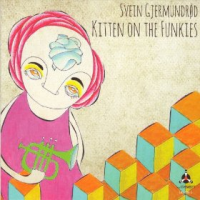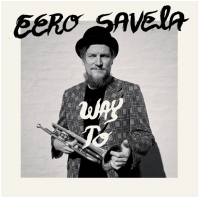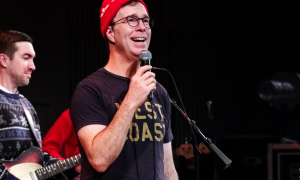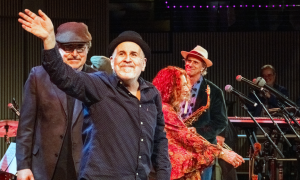Home » Jazz Articles » Live Review » PianOrquestra at Belfast Festival 2013
PianOrquestra at Belfast Festival 2013
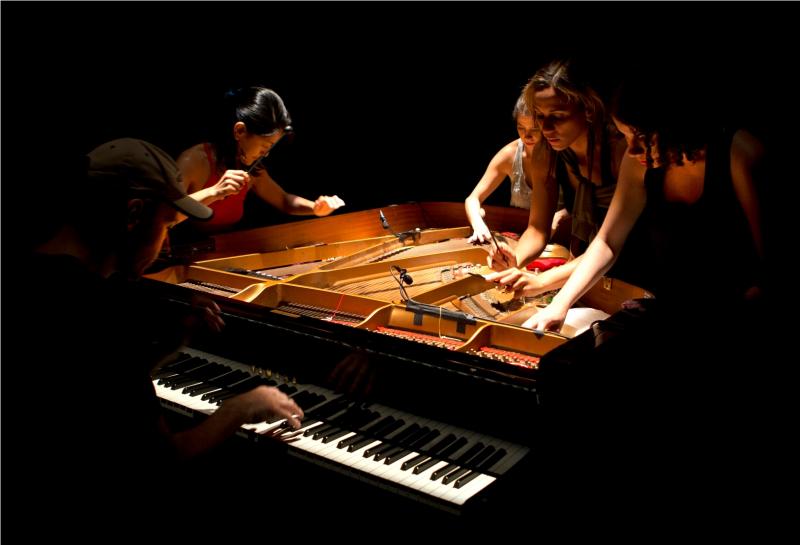
Sonic Arts Research Centre
Belfast Festival
Belfast, N. Ireland
October 20, 2013
Composer John Cage would have been like a little kid in a sweetie shop; a serious little kid perhaps, but one at play nonetheless, because the Sonic Arts Research Centre of the Queens University Belfast is equipped like few other centers in the world to develop and experiment with the creation of music and sound. Its Sonic Laboratory, a specially designed acoustic space, has 48 speakers positioned around the room with variable acoustic space—in other words the walls can be moved—and the floor is a cage-like metal grid, with speakers in the basement beneath. It's not designed for high heels but can you imagine how your old LPs would sound in total-surround sound on this scale?
The SARC was opened by Karlheinz Stockhausen in 2004 and has brought together a world class research team working in the fields of music, computer science and electrical and electronic engineering. Though primarily designed for research into the placement and design of loudspeakers and the diffusion and perception of sound, it's also a very funky space for a gig. As part of the Belfast Festival—now in its 51st year—Brazilian group PianOrquestra gave an intense performance of pieces by pioneering avant-garde experimenters Cage and Earle Brown.
For forty minutes, eight hands belonging to Anne Amberger, Tattiana Dumas, Priscilla Azevedo and director Claudio Dannenberg worked in various combinations to coax a wealth of sonorities from one concert piano. Saxophonist Franciscka Schroeder provided alternative textures on several numbers. One or two pianist would sit on the stool while the others worked on the piano's innards. On occasion, all four banged, scraped, plucked, rubbed and tickled the strings, resonators and wooden bones of the piano using a treasure trove of found objects including plectrums, plastic sheets, a metal chain, a plastic necklace, sticks of various sizes, rubber. Prior to the performance several dozen screws of various sizes had been painstakingly positioned over the course of two hours to alter the strings' tension and pitch.
Segments of Brown's piece "December 1952" alternated with Cage's sonatas. Brown's peculiar from of formal notation was projected onto a large screen suspended above the musicians. Despite the seemingly fragmented, abstract nature of the music there was a pronounced rhythmic component to each piece, from both the keys and the percussive manipulation of the piano's body. At times the rhythm charged like industrial machinery, at other times it stuttered like a drunken clock, alternatively stumbling and accelerating a little manically. At one point, eight hands beat driving African rhythms on the piano's inner frame.
The live notation projected on the screen and sound manipulation was orchestrated by Pedro Rebelo and Justin Yang. On Yang's composition "Webwork" a series of dots appeared on a circle with a discernible sense of rhythm while three differently colored bands rotated like the hands of a clock. As each band struck a dot a piano note was played, a string plucked or a note drummed on the body.
Building slowly, the dots appeared with greater frequency and with a more random pattern of dispersal as the three colored bands began to move at different speeds, accelerating and decelerating according to Yang's design. The musician's faces were a portrait of intense concentration as they followed the notation's evolution on a monitor. The combination of brightly visual 'composed' notation and the musicians' response was strangely hypnotic—like watching a surreal computerized car-race with an avant-garde soundtrack.
Despite the fragmented, staccato nature of the music there was nevertheless a perceptible flow from piece to piece and within each piece as well. Brooding soundscapes were punctuated by sharp exclamations but moments of lyricism and melodic contour did surface. A camera mounted above the piano projected the manipulation of the piano with the array of found objects. On the final piece, PianOrquestra's own "Perk," with Rebelo on the piano stool, five musicians got under the bonnet and with an assortment of strange tools retuned the valves and pistons of the engine so that it roared.
On two occasions, the recorded voice of Cage filled the auditorium. On the first of these recordings, Cage described an experience in a sound-proof room where he could hear two distinct sounds. One, the sound engineer informed him, was the high frequency of his nervous system in operation and the second was the low frequency of his blood circulation. The conclusion Cage drew was that he was making music without intending to.
Perhaps the enduring fascination with Cage and Brown's sound experiments lies in the fact that we all resonate and vibrate at varying pitches, rhythms and levels of intensity. In their and PianOrquestra's complex language reside the essence of our own unintended, undirected internal symphonies.
Photo Credit:
Photo courtesy of PianOrquestra
Tags
PREVIOUS / NEXT
Support All About Jazz
 All About Jazz has been a pillar of jazz since 1995, championing it as an art form and, more importantly, supporting the musicians who make it. Our enduring commitment has made "AAJ" one of the most culturally important websites of its kind, read by hundreds of thousands of fans, musicians and industry figures every month.
All About Jazz has been a pillar of jazz since 1995, championing it as an art form and, more importantly, supporting the musicians who make it. Our enduring commitment has made "AAJ" one of the most culturally important websites of its kind, read by hundreds of thousands of fans, musicians and industry figures every month.


